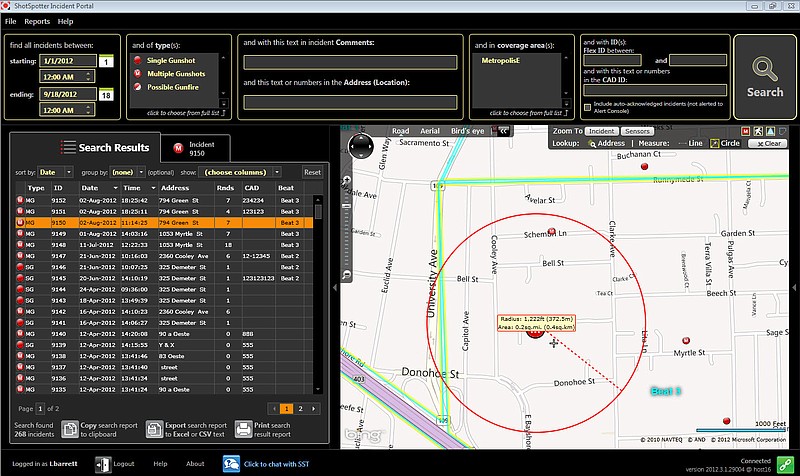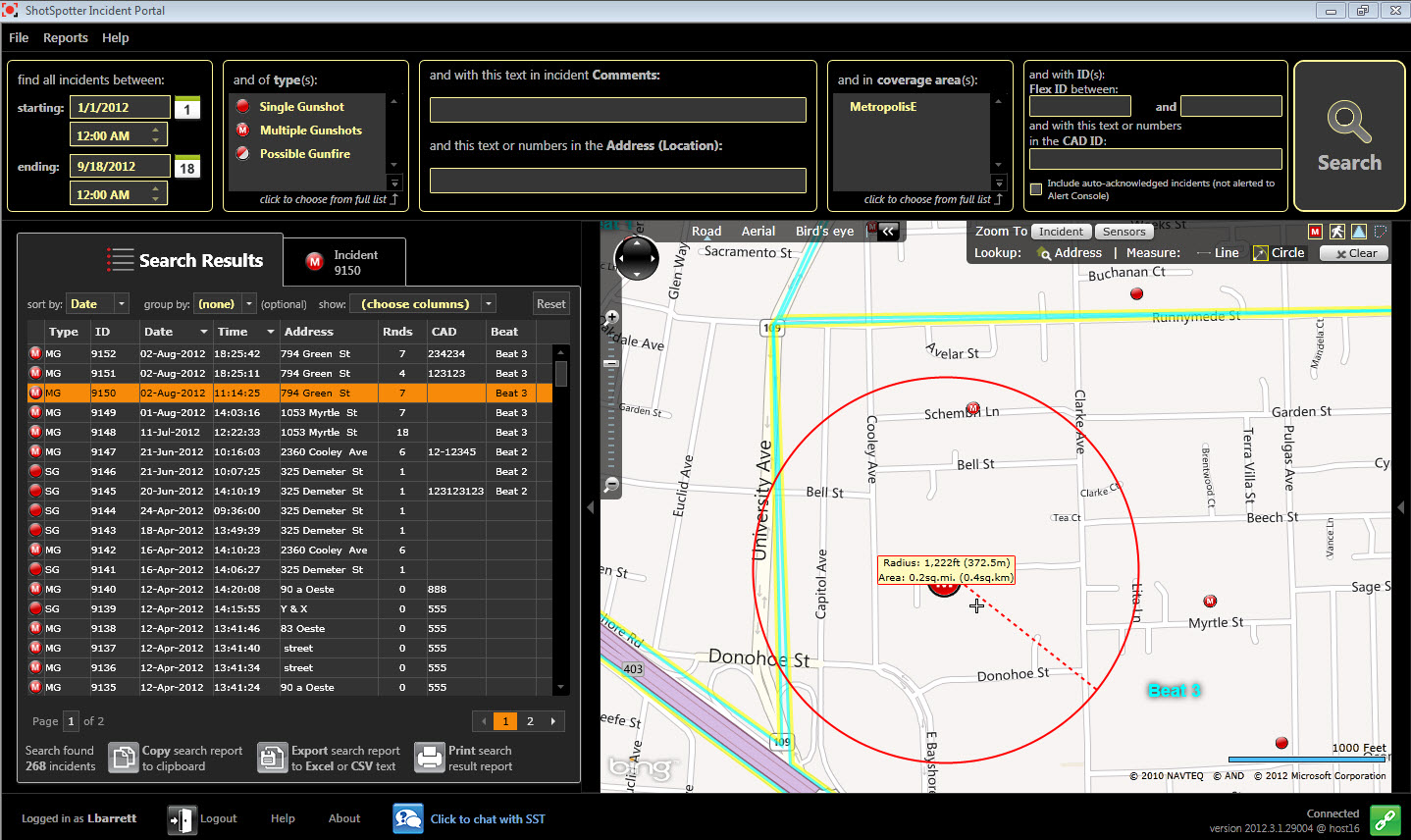Chattanooga police hope to deploy a new system in parts of the city that uses microphones to immediately pinpoint the location of gunfire and alert officers to the shots within a minute.
The system, called ShotSpotter, uses a network of sensors -- usually placed on rooftops -- to triangulate the location of a gunshot to within 10 feet and quickly get that information to officers.
Police Chief Fred Fletcher plans to ask the City Council to fund the service, which operates like a subscription, during the 2015-2016 budget process.
Created by a private California company in 1997, ShotSpotter is up and running in about 85 cities nationwide, CEO Ralph Clark said. If Chattanooga police do deploy the system, the city will become the first in Tennessee to use it.
Clark calls ShotSpotter an "acoustic awareness technology." In addition to pinpointing the location of gunfire, ShotSpotter can also give officers a short audio recording of the shots and can determine whether the incident involves multiple shooters or automatic weapons.
The sensors in the streets record and send information it to ShotSpotter's incident response center in California, where experts review the alert and ensure the sensor did capture gunfire, rather than fireworks or a car's backfire. The alert is then sent back to police.
On average, it takes 45 seconds from the time the shots ring out for the alert to hit an officer's in-car computer, Clark said.
That's much different from the way it works now: Officers currently rely on residents to call 911 and report shots fired. That process can take several minutes, if it happens at all. Gunshots often go unreported, especially when no one is hurt.
East Lake Neighborhood Association secretary Linda Richards said she rarely calls police when she hears shots.
"I don't call at all," she said. "Because I can't tell if they're gunshots or not. And I'm not sure exactly where they're coming from. I don't have a clue."
Fletcher estimated only 15 to 30 percent of gunshots fired within the city are being reported to police.
"We had incidents throughout last year where by the time somebody got hurt, the investigation revealed that there were one, two or three shootings previously that nobody reported," Fletcher said. "What we'd really like to do is get ahead of that curve. To be in the areas and protecting people before someone gets hurt."
The police department would rent the equipment from ShotSpotter and pay an annual per-square-mile fee based on several factors, like the size of the deployment and how the data is used after it is collected.
ShotSpotter's smallest deployments are at least three to five square miles, Clark said. In Chattanooga, Fletcher would like to set the system up in a 4.5-square-mile chunk of town -- mostly in East Chattanooga, including areas where gun violence is frequent, such as Highland Park, Orchard Knob or Alton Park.
ShotSpotter costs between $60,000 and $100,000 per square mile per year, Clark said. That would translate to a $270,000 to $450,000 price tag for Chattanooga's first-year deployment. Fletcher said he hopes to spend around $300,000.
He said the department initially considered deploying in just a three-mile radius, which would have included about 20 percent of the city's reported homicides and shootings.
"I wanted more than that," Fletcher said. "We looked at three and if I recall the numbers, we get a bit of an exponential increase by going up to about four and a half. So it's a cost-benefit analysis."
Police in Birmingham, Ala., have been using ShotSpotter in their most violent neighborhoods since 2007, said Lt. Sean Edwards. He said it has proven to be an effective tool in reducing response time and deterring shootings.
"The sensors are pretty accurate," he said. "We have a lot of people shooting guns, and it's been a good deterrent. We've even had people ask us like, 'How did you guys know to come literally right to my back door?'" he said.
Still, Clark said, officers must act on the information gleaned by ShotSpotter in order to see an actual reduction in violence after the system is deployed.
"Technology-wise, this works, it's proven," Clark said. "But that doesn't matter if law enforcement officers are not getting out of their cars, getting to the dots [that mark shootings], finding shell casings, asking if people are OK and showing a real commitment to that underserved community. If that stuff doesn't happen, then you're just paying for a fancy system to tell you a lot about gunfire."
Fletcher said he plans to have his officers do that kind of follow-up, and is considering several ways he could reallocate resources to make that possible if the City Council agrees to try the system.
If the proposal reaches that point, it would take three to four months after the purchase order for ShotSpotter to set up a complete system in Chattanooga.
Contact staff writer Shelly Bradbury at 423-757-6525 or sbradbury@timesfreepress.com with tips or story ideas.

